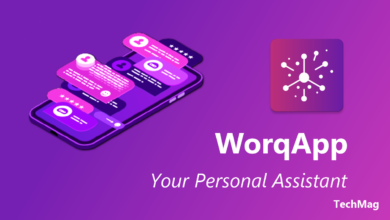
In today’s rapidly evolving world, where digital technology has become the cornerstone of communication, education, and access to information, the “digital divide” concept has gained paramount importance. The digital divide refers to the gap between those with seamless access to digital resources and those lacking the means to connect and engage with the digital realm. This divide is not limited to technology alone; it encompasses broader societal implications, as it can potentially exacerbate existing inequalities and limit opportunities for a significant portion of the population.
The impact of the digital divide reaches far beyond mere access to devices and the internet. It influences economic prospects, educational achievements, and the overall quality of life. As we delve into the complexities of bridging the digital divide, we uncover a multifaceted challenge that requires comprehensive solutions. This article aims to dissect the various dimensions of the digital divide, understand its implications, and explore the strategies and initiatives undertaken to bridge this gap and create a more inclusive and equitable digital landscape.
Understanding Bridge the Digital Divide
The digital divide can be categorized into two main aspects: the access divide and the usage divide. The access divide pertains to the availability of technology and internet connections, while the usage divide refers to the ability to effectively utilize these resources.
Read More: The Impact of Government Regulations on Digital Businesses: A Comprehensive Guide
Factors Contributing to the Digital Divide
The digital divide is a complex phenomenon influenced by myriad factors that collectively shape the disparities in access to digital technologies and the internet. These factors encompass tangible and intangible aspects, intertwining to create barriers that hinder certain groups from fully participating in the digital age. Understanding these contributing factors is essential for formulating effective strategies to bridge the divide and ensure equitable digital inclusion.
- Economic Disparities: One of the primary drivers of the digital divide is economic inequality. Access to digital devices, high-speed internet, and technology-related services often requires a financial investment. Individuals from lower-income backgrounds might need help to afford these resources, limiting their ability to engage fully in online activities, education, and job opportunities.
- Geographic Location: The physical location of individuals plays a significant role in determining their access to the digital world. Rural and remote areas might need more infrastructure for reliable internet connectivity, leaving inhabitants in these regions disconnected from the global digital network.
- Educational Background: Digital literacy and familiarity with technology are crucial for navigating the digital landscape effectively. Individuals with limited educational opportunities might need help adopting and using digital tools, leading to a lack of access to online information and services.
- Age and Generational Divide: Younger generations tend to adapt to new technologies more readily than older ones. This generational gap in digital literacy can isolate older individuals, making it difficult for them to access online resources and participate in digital communication.
- Gender Disparities: Gender inequality can further perpetuate the digital divide. Women, particularly in certain cultures, might face social or familial restrictions that limit their access to technology and the internet, inhibiting their participation in online activities.
- Digital Infrastructure: The availability and quality of digital infrastructure, including broadband networks and cellular coverage, play a pivotal role in determining access to the online world. Areas with inadequate infrastructure suffer from slow or unreliable connections, hindering residents’ ability to engage in digital activities seamlessly.
- Cultural and Language Barriers: Digital content is often created in dominant languages, which can exclude individuals who speak less commonly used languages or non-native speakers. Additionally, cultural barriers might discourage certain groups from participating in online communities.
- Disabilities and Accessibility: People with disabilities can face significant challenges in accessing digital content if websites, applications, and devices are not designed with accessibility in mind. This exclusion limits their ability to engage fully in the online sphere.
- Awareness and Perception: Limited awareness about the benefits of digital technology or misconceptions about its use can prevent individuals from seeking digital resources. Overcoming these perceptions and fostering a positive attitude toward technology is crucial for closing the digital divide.
- Government Policies: Government policies related to technology infrastructure, education, and accessibility can contribute to or alleviate the digital divide. Supportive policies can promote digital inclusion, while a lack of regulation or investment can exacerbate disparities.
Impact of the Digital Divide
The digital divide exacerbates existing inequalities. Those with access should take advantage of educational resources, job opportunities, and essential services like healthcare information. This divide also hinders social and civic engagement, further deepening societal gaps.
Initiatives to Bridge the Gap
Numerous initiatives have been launched to bridge the digital divide. Non-profit organizations, governments, and tech companies work together to provide access to underserved communities. Programs that offer subsidized internet plans and affordable devices are helping to level the playing field.
Importance of Digital Literacy
More than merely providing access is needed; digital literacy is equally vital. Individuals need the skills to navigate the digital landscape safely, critically evaluate online information, and use digital tools effectively.
Role of Governments and Policies
Governments play a pivotal role in narrowing the digital divide. Crafting policies that promote the expansion of broadband infrastructure and subsidize internet costs can make a significant impact.
Collaborations between Public and Private Sectors
Collaborations between the public and private sectors are essential for comprehensive solutions. Public-private partnerships can lead to innovative strategies that address both access and education.
Community-Based Approaches
Localized initiatives that involve community members in decision-making can be highly effective. Community centers and libraries can serve as hubs for digital access and training.
Innovative Technological Solutions
Advancements like low-cost, high-speed satellite internet and mesh networks are revolutionizing internet access in remote areas, making significant strides in bridging the divide.
Overcoming Barriers: Accessibility and Affordability
Ensuring internet access is affordable and available to all is critical. Mobile connectivity and community Wi-Fi projects are viable options for extending reach.
Empowering Marginalized Groups
Efforts to bridge the divide should prioritize marginalized groups such as people with disabilities, ethnic minorities, and older people. Tailored resources and training can empower these individuals to become digitally literate.
Education and Skill Development
Integrating digital literacy into formal education curricula can ensure that younger generations are well-equipped to thrive in the digital age.
Measuring Progress
Regularly assessing and measuring progress in closing the digital divide is essential. Data-driven insights help refine strategies and allocate resources more effectively.
The Future of Digital Inclusion
Bridging the digital divide is an ongoing journey. As technology evolves, it is crucial to adapt strategies and ensure access and skills keep pace with the changes.
Read More: The Growth of Pakistan’s Digital Advertising Industry
Conclusion
In conclusion, bridging the digital divide is not just a technological challenge; it’s a societal imperative. As we navigate the complexities of the digital age, ensuring that no one is left behind due to lack of access or skills is essential. We can create a more equitable and empowered world by addressing the barriers that hinder digital inclusion, promoting digital literacy, and fostering collaboration between various stakeholders.
Imagine a future where all individuals, regardless of their background, have the tools and knowledge to harness the power of technology for personal and collective growth. This vision requires commitment, innovation, and a shared understanding of the transformative potential of digital inclusion.
As governments, organizations, and communities continue to work together, we can build bridges that span the digital divide, connecting people and opportunities across the globe. Let us strive to create a world where everyone has equal access to information, education, and the unlimited possibilities of the digital realm.
FAQs
Why is the digital divide a pressing issue?
The digital divide exacerbates inequalities and limits opportunities for those without access to technology.
How can communities play a role in bridging the gap?
Communities can establish centers for digital access and education, fostering local solutions.
What are some innovative technologies for expanding access?
Technologies like satellite internet and mesh networks are expanding connectivity possibilities.
What is the role of digital literacy in bridging the divide?
Digital literacy is crucial for individuals to make the most of available technology and navigate the online world safely.
What does the future hold for digital inclusion?
As technology advances, ongoing efforts will be necessary to ensure that digital inclusion remains a priority.











